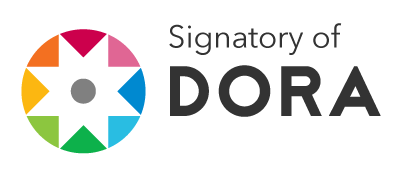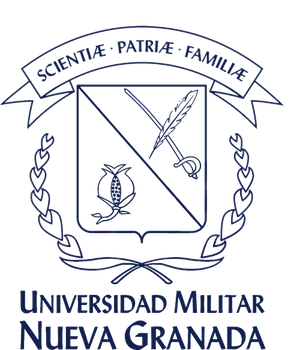A pilot study of the relationship between creativity, multiple intelligences and academic performance in compulsory education students
Abstract
One of the main challenges at present is to achieve high - quality Education, one which takes into account, along with the whole teaching-learning process, the students’ diverse abilities, skills and cognitive, social and emotional aptitudes. The insertion of multiple intelligences, as well as variables such as creativity, may contribute to the development of singular capacities and students’ school performance. Studying the way these variables are related is imperative. The objective of this investigation consists in analyzing the link between Creativity, Multiple Intelligences and Academic Performance among Colombian primary school students. The design for this study is a non-experimental – descriptive – correlating focus, in which a sample of 40 subjects was studied; 20 girls and 20 boys with an age average of 10,051. All of them studying 5th grade in primary school at the Educational Institution Ana Elisa Cuenca Lara, branch Santa Ana, at the municipality of Yaguará – Hulia – Colombia. Their creativity was estimated through the use of two tests, one subjective, Turtle (1980), and one objective of execution EMUC, Sánchez (2006). To meet the Multiple Intelligences, it was applied a full specific inventory filled out by the valued students’ teachers, taken from Valero (2015). For the academic performance, the 2015’s subjects’ school record was taken as a reference. As statistical analysis, it was applied the descriptive – correlating (Person’s correlation coefficient), with the statistical software SPSS, version 2.2. The results obtained confirm all hypotheses contemplated, making evident a statistically meaningful and positive connection between the three variables analyzed. Finally, it analyzes the results for Multiple Intelligences and creativity as empowering strategies for the valued subjects’ academic development in this investigation’s sampleDownloads
References
Amabile, T. y J. Pillemer (2012). Perspectives on the Social Psychology of Creativity. Journal of Creative Behavior 46, 1: 3–15.
https://doi.org/10.1002/jocb.001
Batey, M., Chamorro-Premuzic, T., & Furnham, A. (2009). Intelligence and personality as predictors of divergent thinking: The role of general, fluid and crystallised intelligence. Thinking Skills and Creativity, 4(1), 60-69.
https://doi.org/10.1016/j.tsc.2009.01.002
Bredderman, T. (1983). Effects of Activity-based Elementary Science on Student Outcomes: A Quantitative Synthesis. Review of Educational Research, 53(4), 499-518. http://dx.doi.org/10.3102/ 00346543053004499.
https://doi.org/10.3102/00346543053004499
Diamond, A. (2010). The Evidence Base for Improving School Outcomes by Addressing the Whole Child and by Addressing Skills and Attitudes, Not Just Content. Early Education And Development, 21, 780-793.
https://doi.org/10.1080/10409289.2010.514522
PMid:21274420 PMCid:PMC3026344
Ferrándiz, C., Bermejo, R., Sainz, M., Ferrando, M. y Prieto, M. D. (2008). Estudio del razonamiento lógico-matemático desde el modelo de las inteligencias múltiples. Anales de psicología, 24, 213-222.
Froit, F. E. (1976). Curriculum experiences and movement from concrete to operational thought. In John W. Renner, & Donals G. Stafford, Research, teaching, and learning with the Piaget model. Norman, OK: University of Oklahoma Press.
Furnham, A., Batey, M., Anand, K., & Manfield, J. (2008). Personality, hypomania, intelligence and creativity. Personality and Individual Differences, 44(5), 1060-1069.
https://doi.org/10.1016/j.paid.2007.10.035
Furnham, A., & Bachtiar, V. (2008). Personality and intelligence as predictors of creativity. Personality and individual differences, 45(7), 613-617.
https://doi.org/10.1016/j.paid.2008.06.023
Gardner, H. (1983). Frames of mind. New York: Basic Books. (Traducción castellano, Estructuras de la mente. La teoría de las Inteligencias Múltiples. México: Fondo de Cultura Económica, 1987. Última Edición 2001) en Ferrándiz, C., Bermejo, R., Sainz, M., Ferrando,M. y Prieto, M. D. (2008). Estudio del razonamiento lógico-matemático desde el modelo de las inteligencias múltiples. Anales de psicología, 24, 213-222.
Gardner, H. (2004). Changing minds: The art and science of changing our own and other people's minds. Boston: Harvard Business School Press.
Harlen, W. (1999). Purposes and Procedures for Assessing Science Process Skills and Practice. Assessment in Education, 6(1), 129-144.
https://doi.org/10.1080/09695949993044
Holm-Hadulla, R. (2013). The Dialectic of Creativity: A Synthesis of Neurobiological, Psychological, Cultural and Practical Aspects of the Creative Process. Creativity Research Journal, 25 (3): 293-299.
https://doi.org/10.1080/10400419.2013.813792
Miller, G. F., & Tal, I. R. (2007). Schizotypy versus openness and intelligence as predictors of creativity. Schizophrenia research, 93(1), 317-324.
https://doi.org/10.1016/j.schres.2007.02.007
PMid:17399953
Osborne, R., & Freyberg, P. (1985). Learning in Science: The implications of children's science. Auckland, London: Heinemann publishers.
Ostlund, K. (1998). What the Research Says About Science Process Skills. Electronic Journal of Science Education, 2, 1-8. http://ejse.southwestern.edu/article/ view/7589/5356
Prado Suárez, R. C. (2006). Creatividad y sobredotación. Diagnóstico e intervención Milelr63-76.
Preckel, F., Holling, H., & Wiese, M. (2006). Relationship of intelligence and creativity in gifted and non-gifted students: An investigation of threshold theory. Personality and individual differences, 40(1), 159-170.
https://doi.org/10.1016/j.paid.2005.06.022
Rosario, P., Lourenço, A., Paivia, O., Rodrigues, A., Valle, A. y Tuero-Herrero, E. (2012). Predicción del rendimiento en matemáticas: efecto de variables personales,socioeducativas y del contexto escolar. Psicothema, 24, 289-295.
PMid:22420359
Silvia, P. J. (2008). Interest—The curious emotion. Current Directions in Psychological Science, 17(1), 57-60.
https://doi.org/10.1111/j.1467-8721.2008.00548.x
Simon, M.S., & Zimmerman, J.M. (1990). Science and writing. Science and Children, 18(3), 7-8.
Sternberg, R. J., & Lubart, T. I. (1997). ¿Qué es la creatividad y quién la necesita? La creatividad en una cultura conformista, 27-56.
Sternberg, R. J. y O´Hara, L. (2005). Creatividad e inteligencia. CIC Cuadernos de Información y Comunicación, (10), 113-149.
Tipps, S. (1982). Formal Operational Thinking of gifted students in grades 5, 6, 7, and 8. Paper presented at the annual meeting of the National Association for Research in Science Teaching, Lake Geneva, WI.
PMid:6953216











